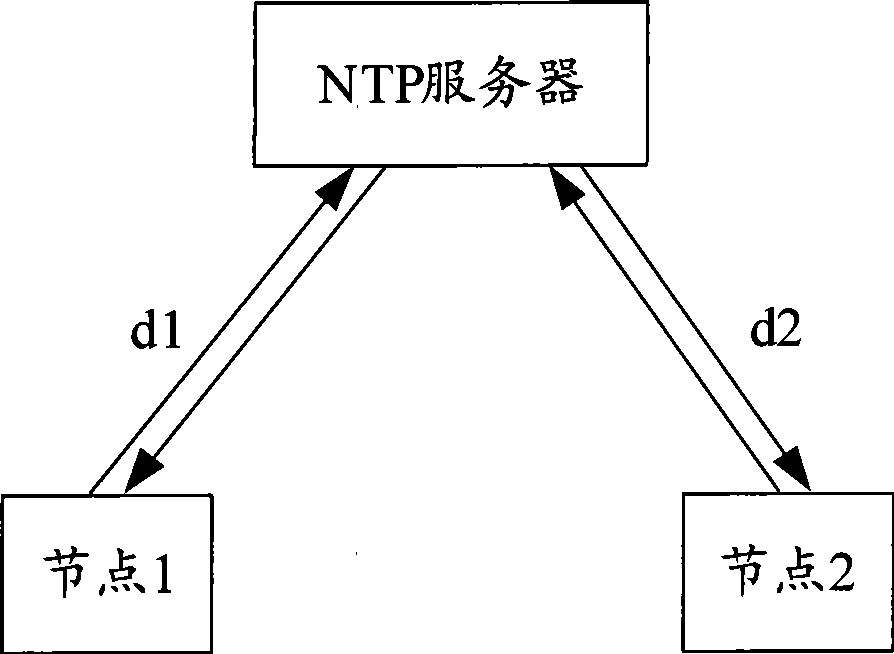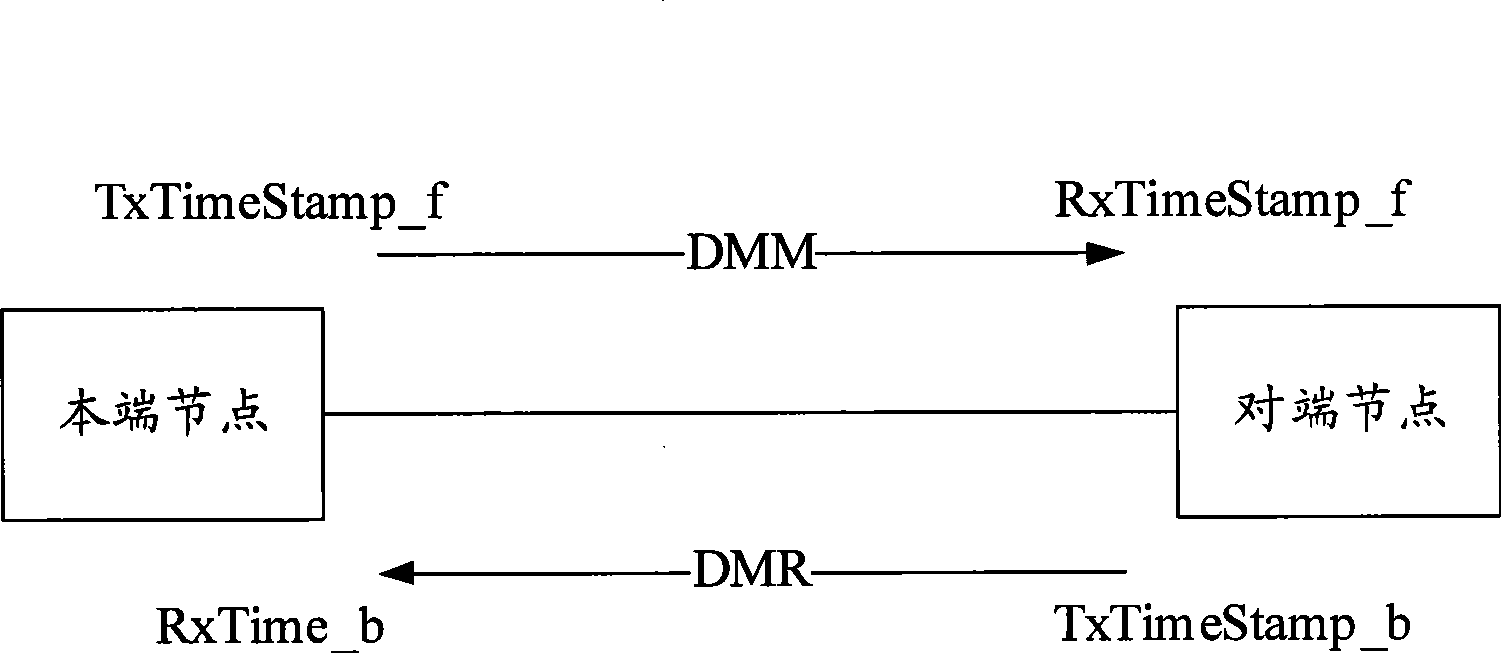Time synchronization method, system and customer terminal
A time synchronization and client-side technology, applied in the direction of synchronization devices, transmission systems, digital transmission systems, etc., can solve the problems of low synchronization accuracy and time synchronization dependence on external protocols, etc., achieve flexible parameter configuration, enhance independence and robustness, The effect of improving accuracy
- Summary
- Abstract
- Description
- Claims
- Application Information
AI Technical Summary
Problems solved by technology
Method used
Image
Examples
Embodiment Construction
[0042] The technical solutions of the present invention will be further elaborated below in conjunction with the accompanying drawings and specific embodiments.
[0043] The time synchronization method provided by the present invention is mainly realized based on the two-way frame delay measurement mechanism of T-MPLS network performance. Bidirectional frame delay measurement principle of T-MPLS network performance, such as figure 2 As shown, the local node sends a Double-way Frame Delay Measurement Message (DMM, Double-way Frame Delay Measurement Message) message to the peer node, and the DMM message is marked with the sending time TxTimeStamp_f of the DMM message. The peer node receives the DMM message, records the receiving time RxTimeStamp_f of the DMM message, generates a two-way frame delay measurement response (DMR, Double-way Frame Delay Measuremet Reply) message and returns it to the local node. The DMR message is stamped with RxTimeStamp_f and the sending time TxTi...
PUM
 Login to View More
Login to View More Abstract
Description
Claims
Application Information
 Login to View More
Login to View More - R&D
- Intellectual Property
- Life Sciences
- Materials
- Tech Scout
- Unparalleled Data Quality
- Higher Quality Content
- 60% Fewer Hallucinations
Browse by: Latest US Patents, China's latest patents, Technical Efficacy Thesaurus, Application Domain, Technology Topic, Popular Technical Reports.
© 2025 PatSnap. All rights reserved.Legal|Privacy policy|Modern Slavery Act Transparency Statement|Sitemap|About US| Contact US: help@patsnap.com



